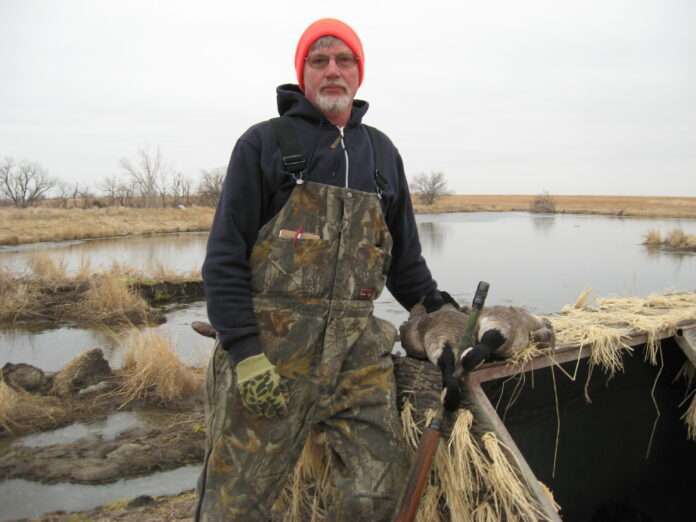I never feel like I catch as many coyotes as I should, so now that we had a little snow on the ground, I decided to drive around to a few properties where I’d had coyote traps this year to see if there were tracks in the snow. I drove across a couple fields of soybean stubble to a spot clear in the middle of a section where the bean stubble bordered an overgrown pasture. At one end of the field was the deep drainage ditch known locally as the “big ditch,” and several game trails going down the far side of the ditch and ending up in front of me on the other side were covered with fresh coyote tracks in the snow. I set snares in 3 of the trails, and the second morning one snare held the body of a coyote so terribly infected with mange that it was barely recognizable. The poor critter hardly had enough fur on its entire body to cover a pair of ear muffs.
After a discussion with my wife during which I whole-heartedly disputed a story she had heard about mange being intentionally introduced, I did some research. I found story-after-story and record-after-record verifying that fact. Between 1883 and 1918, Montana paid over $340,000 in bounties for the killing of more than 80,000 wolves. Seeking a cheaper method of control, for wolves and coyotes, a 1905 Montana law provided for the capture of a number of wild wolves and coyotes that were then intentionally infected with Sarcoptic mange and released back into the wild.
Sarcoptic Mange is a disease found in canines, both wild and domestic, caused by Sarcoptic Mites. These parasitic mites burrow into the skin, causing intense scratching and resulting hair loss, weakness and very possibly death as the infected animal loses most or all of its fur and becomes too weak to hunt. The hair loss usually begins on the tail and hind legs then slowly works its way across the animal’s entire body. Cold temperatures will not kill the mites as they are burrowed into the skin, so the mites won’t die until the coyote dies. Mange is highly treatable in domestic canines but obviously not in wild foxes, wolves and coyotes, thus it can wreak havoc with wild populations. I think most trappers here in the Midwest catch a few coyotes with mange every year. It’s not entirely known what kind of survival rate to expect, but that seems to be highly determined by winter conditions in the area. Our local conservation officer pointed out to me that despite some periods of frigid temperatures and a few snow storms, the last several winters have been fairly mild here in Kansas, possible allowing some infected animals to survive. It’s also thought that young coyote pups contracting mange will most certainly die. Mange is very transmittable from one animal to another, and the higher the wild population of that particular species, the more chances to transmit the disease. Coyotes are very family-oriented and live in family groups, so the mites have ample opportunities to spread throughout the entire family group.
Human infections of mange are extremely rare and short lived and are easily treated medically. Also, mange from wildlife very rarely transfers to domestic animals or livestock. Despite the rare likelihood of transmission, hunters and trappers should handle infected animals with gloves and should throw away or disinfect those gloves afterward. Carcasses of dead mange-infected animals can be buried or burned, or at very least left someplace where dogs or wild canines will not feed on them.
Most people take a dim view of coyotes because they can be such ruthless predators, so when trappers talk of disease problems among the coyote population most folks barely bat an eye. As stated above, the larger the coyote population, the easier it is for disease to get a foothold. Trapping is proven to be a very effective tool in controlling predator populations, and thus helping to control diseases. Besides, as a trapper I like trying to match wits with the wily buggers; I’m often unsuccessful, but I like trying. Continue to Explore Kansas Outdoors!
Steve can be contacted by email at [email protected].





